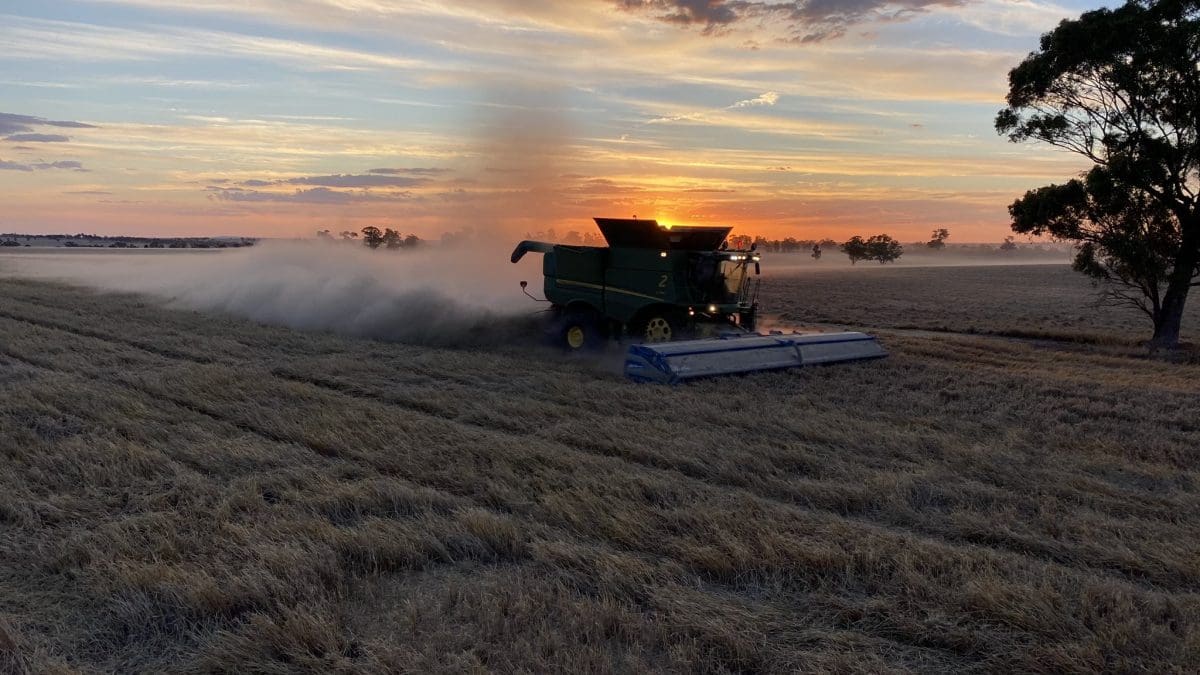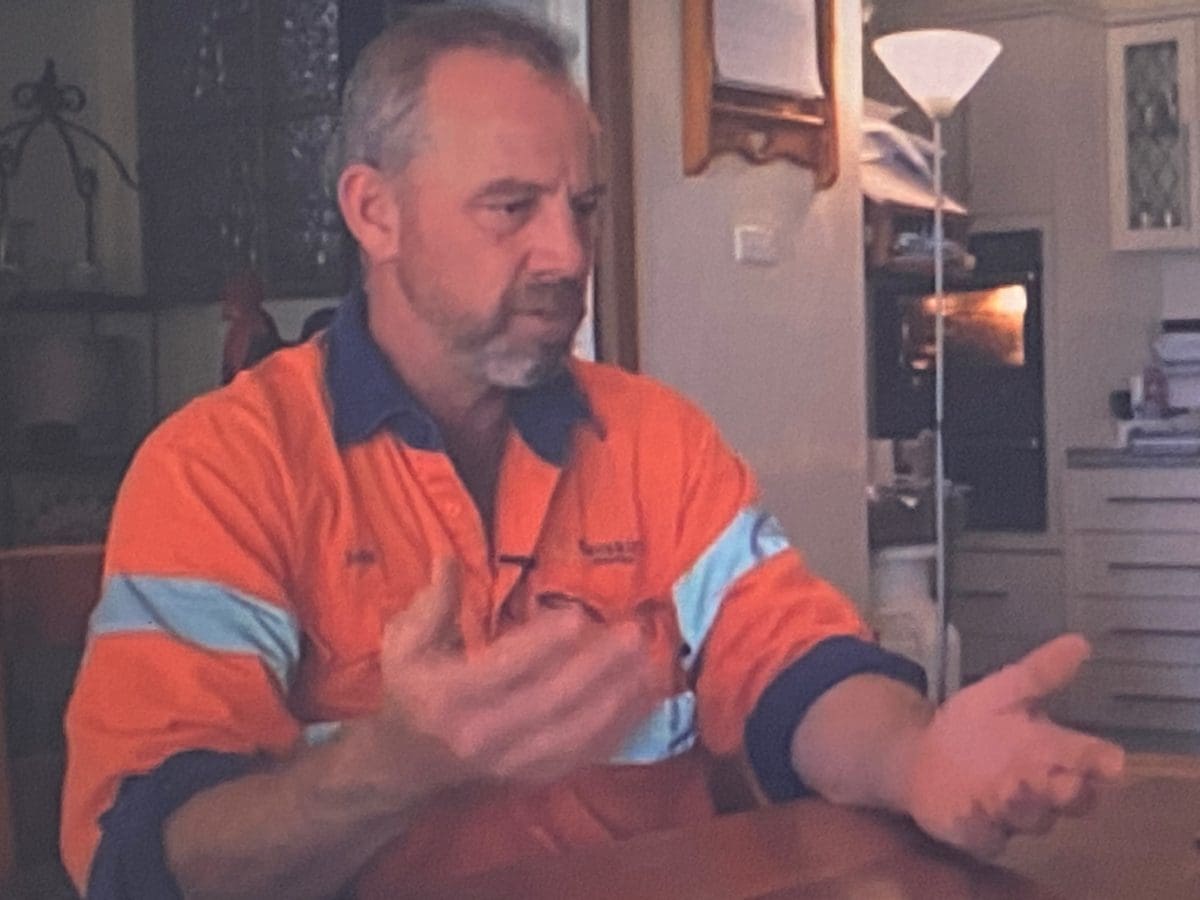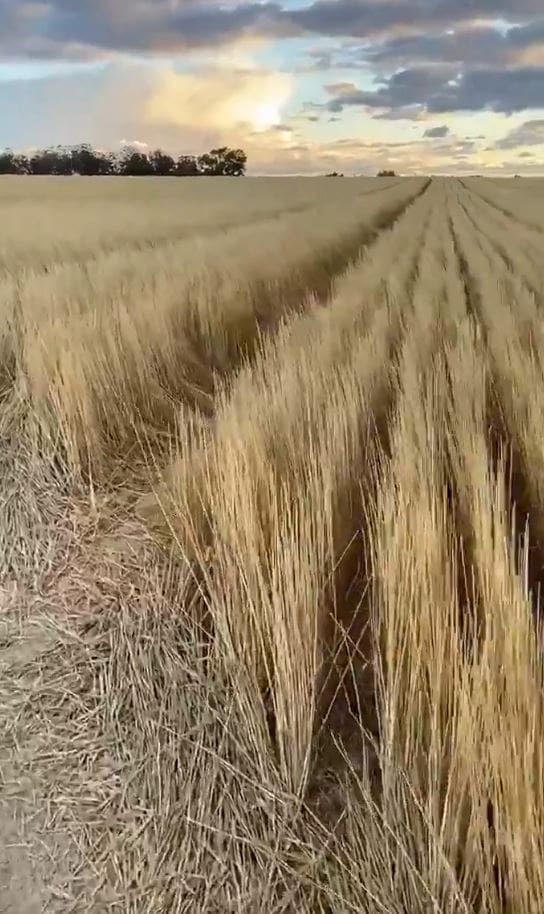
Warakirri Cropping is achieving production and economic efficiencies by switching to stripper-front harvesting.
WITH an emphasis on building groundcover and boosting soil moisture retention, Warakirri Cropping’s Riverina-based regional manager, John Stevenson, is shifting the enterprise over to disc drill sowing and stripper front harvesting.
The business has moved away from tyned planting equipment and wide row spacings, is transitioning out of draper-front harvesting, and has reintegrated sheep into the farming program.
Owned by the Australian REST superannuation fund, Warakirri Cropping is a national, broadacre, dryland cropping business with rural holdings in Western Australia, Victoria, New South Wales and Queensland.
At the company’s large-scale aggregation ‘Orange Park’ near Lockhart in southern NSW, Mr Stevenson runs a six-year rotation – pulse, canola, wheat, canola, wheat, barley – with a focus on strategies that maximise stubble retention.

John Stevenson
Speaking on the Australian Farm Institute’s ‘Conservation Agriculture in 2030’ webinar in December, the 2016 Nuffield Scholar said one of the biggest threats in Australian agriculture was wind and sun, and a lack of groundcover.
“We are trying to catch rainfall to produce crops. The worst thing we can do is leave ground exposed. We have moved into disc seeding and narrow row spacing in the last three years which is also helping with groundcover,” he said.
“It is also helping us maintain residue that we were otherwise having to treat to get a tyne through.
“So, we have gone to disc seeding and are moving to stripper-front technology which we are able to do on narrow row spacings.
“We are aiming to just pluck the grain off the heads and leave the straw standing long which gives shade from sunlight, protection from wind and takes away the impact of rain in heavy events. It allows much better infiltration and better retention of water in the landscape.”
Sound financial basis
Mr Stevenson said while there was a strong element of sustainability behind the decision to transform the farming system and switch to stripper-front harvesting, there was also a sound financial basis for doing it.

Stripper-front harvesters pluck the grain off the heads and leave the straw standing long.
“We are going to be able to harvest with two stripper-front machines what we historically needed four machines to do. So, there is certainly some cost benefit there,” he said.
“We’ve just had some work done where they ran two draper fronts and two stripper fronts side-by-side. The draper fronts averaged 40 tonnes/hour and the stripper fronts averaged 88t/hr, so it is a quantum leap in productivity from very expensive harvest machinery.
“There is a good fuel saving. The headers are still using the same amount of fuel per hour, but they are doing twice the hectares in an hour.”
Livestock return
Mr Stevenson said while the long-standing approach had been to keep stock off the cropping paddocks, the decision was taken to integrate stock back into the system over summer after research had shown there were significant benefits to running stock in the system.
“We have a good resource through summer here. We always have losses through headers, so there’s grain there for sheep to clean up,” he said.
“A lot of times when we walk away from a nice stubble residue and leave it all on the surface we actually lose a lot of that through oxidisation. When you put it through an animal a lot of that gets urinated and defecated back into the soil.
“The sheep take away a food source for vermin, so keep that risk low. They are helping us with weeds that might get through a spray application. We are selectively spraying fields, not broadacre spraying.
“Since we put sheep back into the system, we no longer see fleabane in stubbles. It was becoming a really bad pest through summer. Milk thistles have gone. They just chew the crown right out of it.”
Mr Stevenson said the soil compaction impact from sheep was very low, especially as the animals tended to follow the controlled traffic tramlines through the farming paddocks.
“We capture all the chaff and weed seeds in the wheel tracks. There is nothing else to eat between the wheeltracks so the stock will just walk the wheeltracks. They do their own ‘controlled traffic’,” he said.
Grain Central: Get our free cropping news straight to your inbox – Click here

HAVE YOUR SAY